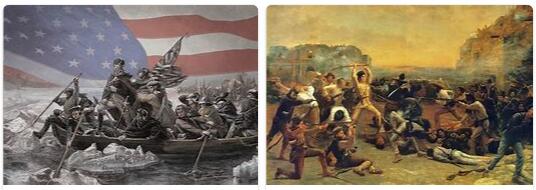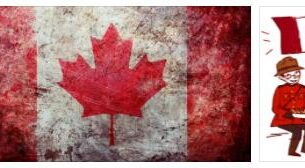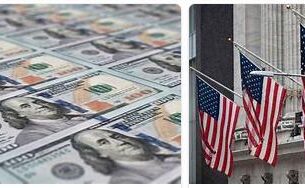HISTORY: THE WASHINGTON AND ADAMS PRESIDENCIES
The westward thrust of the settlers, which had been one of the reasons for the revolution, therefore had the green light and the “continental” destiny of the United States began to take shape. Constitutionally, the United States was such only in name, because in reality it was thirteen sovereign states, barely linked by the “Articles of Confederation and Perpetual Union”, adopted for the needs of war and ratified only in 1781. revealed such that in May 1787 a Convention met, again in Philadelphia, which on September 17 adopted the Constitution which lasted for more than three centuries (except for some amendments). The battle for ratification followed, won by the “federalists” (including A. Hamilton and J. Madison), so that the Constitution could enter into force and on April 30, 1789 Washington, elected first president, was able to take office in New York, the first federal capital (in 1800 the capital was moved to a specially built city, Washington). The president chose as collaborators for the highest offices the most eminent among the federalists and the antifederalists, respectively Hamilton to the treasury and Jefferson as secretary of state, two antithetical personalities (the “realist” and the “idealist”), exponents of two conceptions globally opposed on the development of the United States. Hamilton, in particular, was faced with the onerous task, well accomplished, of organizing the finances of the Union, consolidating the public debt and providing income to meet the expenses of the federal administration.
To this end Hamilton introduced customs duties on imported goods, thus initiating the protectionism that has developed throughout much of American history and has been one of the reasons for dissent between the North and the South. the interests of the incipient industrial North harmed those of the agrarian South; the North therefore preferred a strong central government, on the federalist line, as opposed to the South, which supported the rights of the states, on the antifederalist line. Thus two parties were characterized which, through various and complex events and name changes, continue in the current two parties of the American system: the Democrat, direct heir of the antifederalists, and the Republican, indirect heir of the federalists. United States is a country located in North America according to HYPERRESTAURANT.COM.
Therefore, Bill of Rights), which came into force in 1791, were guaranteed the fundamental rights of freedom, as had happened in France with the “immortal principles” sanctioned by the Revolution. But it was the French Revolution and the war that followed in 1793 between France and England that put American politics to the test. In the same year the United States proclaimed its neutrality, which however became increasingly difficult to enforce, with the consequence of serious internal disagreements on the best course to be taken in the interest of the United States. Washington, in the “farewell message” of 1796 (he had refused to be elected a third time), had recommended to his fellow citizens to avoid getting involved in the conflicts of old Europe, thus setting the premise of American, the main line of US foreign policy until the First World War. With President J. Adams, Washington’s successor, after a period of acute tension with France, the 1778 treaty was dissolved (Treaty of Montefontaine in 1800), thus eliminating the only formal bond of alliance with a European power; but in the meantime the situation had worsened internally, until the enactment of the laws on foreigners and seditions, highly restrictive of civil rights. The result was great unpopularity for President Adams and his party, the federalist, which was defeated in the presidential elections of 1800, never to return to power.
HISTORY: FROM JEFFERSON TO THE MONROE DOCTRINE
The third president of the United States was T. Jefferson (1801-09), with whom a rapid and broad process of democratization of public life, civil and social relations took place. On the international level, the difficulties connected with the European situation continued; to protect neutrality Jefferson proclaimed an embargo that proved disastrous for American interests, so much so that it had to be lifted. Jefferson’s successor, J. Madison (1809-17), therefore inherited a painful situation, which eventually resulted in the war with England (1812-14), concluded by the Peace of Ghent (December 24, 1814) without losers or winners, with the re-establishment of the pre-war borders. However, Jefferson’s assets include the purchase, for 15 million dollars, of Louisiana, Treaty of Paris of April 30, 1803. Thus the United States extended west of the Mississippi, as far as the Rocky Mountains, annexing an immense territory, from which eleven states would rise in the future.
Once peace returned, free from international commitments, the United States was able to devote itself to its own development, both by pushing colonization to the west and by increasing economic growth, with understandable consequences on all other aspects of life. Following the criteria established by the Northwest Ordinance of 1787 for the organization of new states to be admitted to the Union, the original thirteen states grew rapidly in number, reaching a total of twenty-two in 1819. Of these, half were liberal, that is, they did not admit slavery; the other half was slaver. The North, where slavery had been abolished, also due to its uselessness from an economic point of view, was thus opposed to the South, where slavery flourished, being the black labor considered indispensable for the crops that developed there, especially that of cotton. To maintain the equilibrium the admission of a slave state corresponded to the admission of a liberal state; but in 1819 the Missouri request for admission, a slaveholder, threatening to give pre-eminence to the slave states, it caused a very serious crisis, which deeply shook the Union and was finally resolved, in 1820, with the “Missouri compromise”. Along with Missouri was admitted the Maine, a liberal, who wanted to break away from Massachusetts of which he was an addiction; it was also established that the parallel 36º30´ served as a dividing line for the states that would arise in the territory of Louisiana, prohibiting slavery north of that line. In 1819, again, there was another enlargement of the United States, with the purchase of Florida from Spain.
During these events, J. Monroe was president (1817-25), with which the so-called “era of good feelings” began. In fact, the old party divisions were now outdated, the federalists disappeared from the scene, so to speak, by natural death, so much so that in the elections of 1820 they did not even present a candidate. But in the elections of 1824 there were four, all with the label of republican; JQ Adams prevailed (1825-29), son of the second president, under whose presidency, however, the division into two parties (republican-national and democratic-republican) was being redefined around new problems. Monroe was responsible for the enunciation of the “doctrine” that takes his name (December 2, 1823), relating to the non-interference of the United States in European affairs, coupled with the affirmation that the United States would not have tolerated that a European power would establish new colonies in the Americas and would not even allow a European intervention that threatened the independence of American nations. Occasionated by the independence process then underway in Latin America and addressed as a warning to the Holy Alliance, the “doctrine of Monroe” was the starting point of the policy of active presence.



